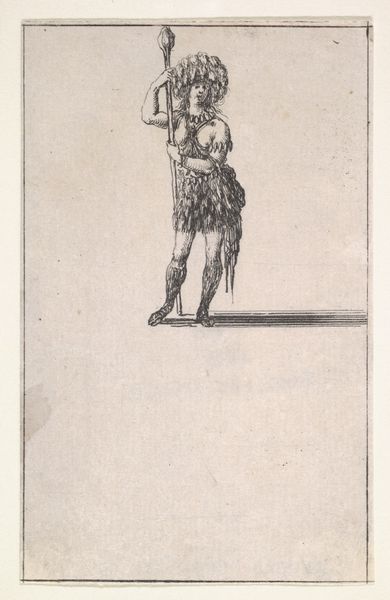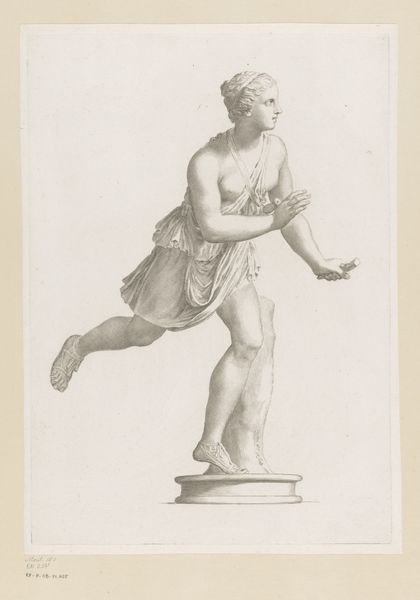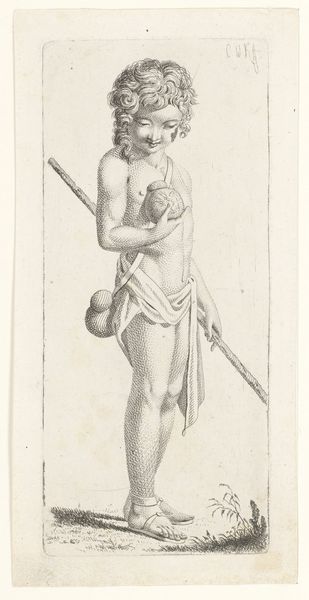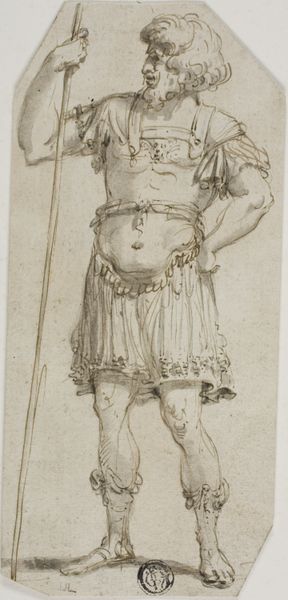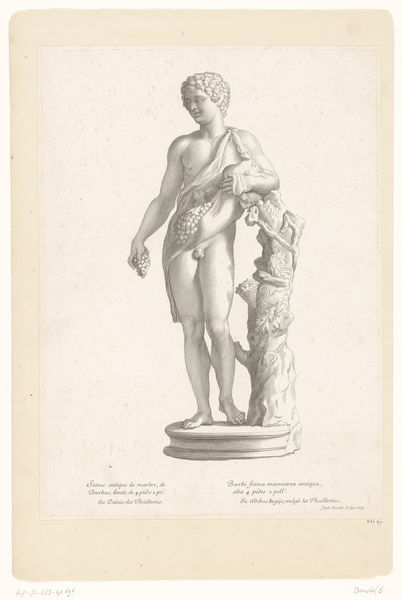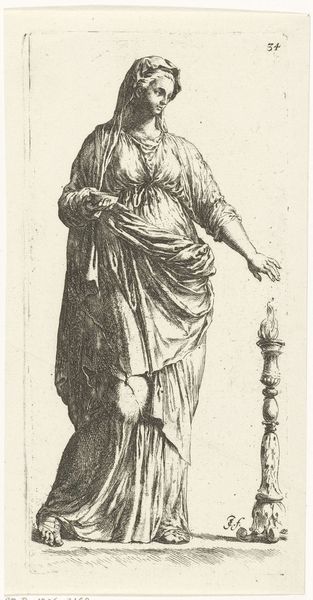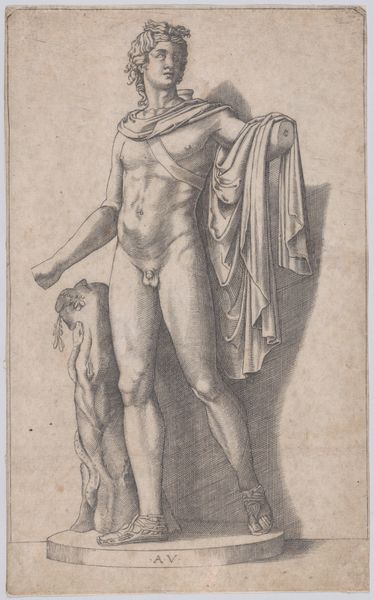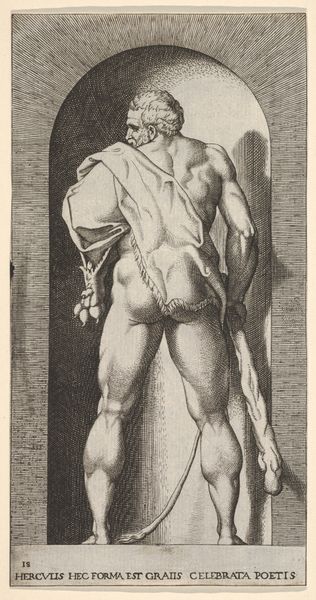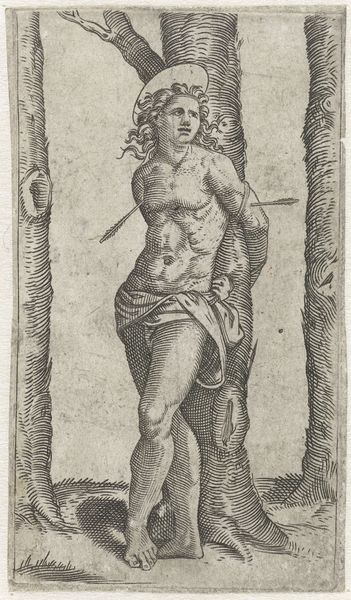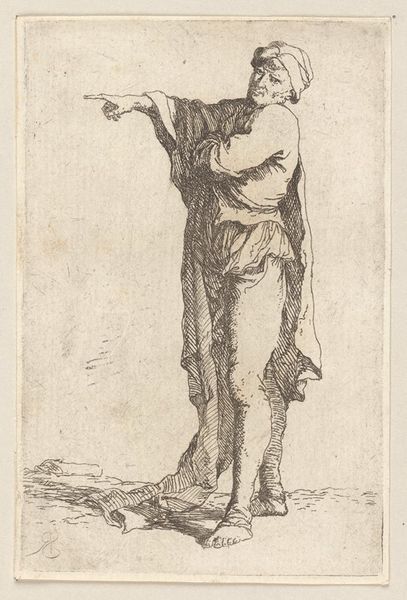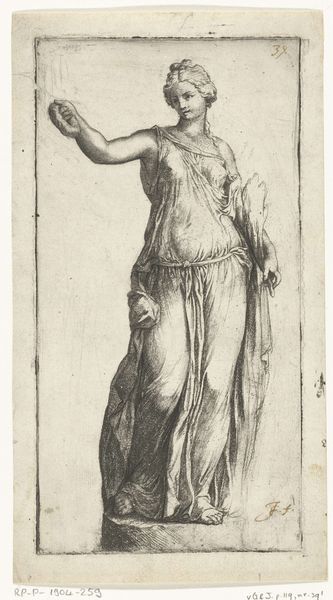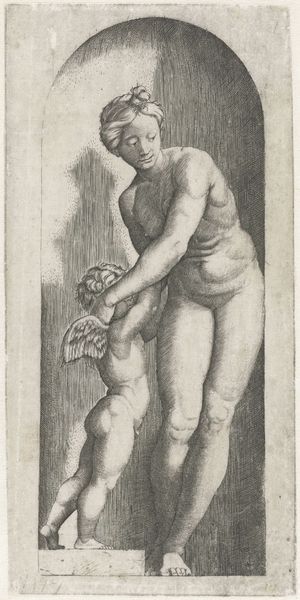
drawing, print
#
pencil drawn
#
drawing
#
aged paper
#
toned paper
#
light pencil work
# print
#
pencil sketch
#
old engraving style
#
personal sketchbook
#
female-nude
#
sketchbook drawing
#
pencil work
#
sketchbook art
#
male-nude
Dimensions: Plate: 3 11/16 × 2 3/8 in. (9.3 × 6 cm) Sheet: 3 3/4 x 2 3/8 in. (9.5 x 6.1 cm)
Copyright: Public Domain
This engraving, "Woman of Virginia," was created by Wenceslaus Hollar, a 17th-century Bohemian artist. It offers a glimpse into the European perspective on the indigenous people of early colonial America. The image presents a Native American woman adorned with beads and wearing a fringed skirt. Hollar, who never actually visited Virginia, based his image on second-hand accounts and earlier, often inaccurate, depictions. The print reflects the European fascination with, and often misrepresentation of, the "New World" and its inhabitants. Consider the historical context: this image was produced during a period of intense colonial expansion, where the visual representation of indigenous peoples played a crucial role in shaping European perceptions and justifying colonial endeavors. Hollar’s print, though seemingly ethnographic, inevitably reflects the biases and agendas of its time. Understanding art like this requires us to examine historical documents, travel narratives, and colonial records. Only then can we start to unravel the complex relationship between art, power, and cultural representation.
Comments
No comments
Be the first to comment and join the conversation on the ultimate creative platform.
